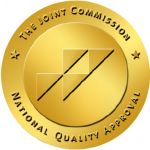Whether or not methadone is effective in treating heroin, why methadone clinics exist, and how…
In a previous article we discussed the difference between two popular medication assisted treatment (MAT) known as suboxone and subutex. This article will discuss another MAT called Methadone.
For decades, methadone has been used as a harm-reduction MAT for helping heroin addicts get off dope. In light of the recent opioid epidemic that has gripped the nation, an increasing number of public health advocates and officials have extolled the possible benefits of methadone as a treatment for opiate addiction.
One of the problems with methadone, though, is the acute and prolonged withdrawal that haunts people who substitute heroin or opiate addiction for methadone dependency. As far as physical dependence goes, few substances are more addictive and produce worse withdrawal symptoms than methadone.
Methadone Is an Opioid
Unlike Suboxone, which is a partial opioid agonist that restricts the effects of opioids and withdrawal symptoms, methadone is an opioid just like heroin or OxyContin. Methadone is dispensed to persons addicted to opioids at SAMHSA-approved treatment programs. Ideally, methadone is only one part of a comprehensive treatment plan that includes group therapy, social support programs, and lifestyle changes.
Because methadone is an opioid, it is still highly addictive even though it is prescribed, distributed, and used as a medication to treat opiate and heroin addiction. Methadone is ingested via a pill, liquid, or wafer, and it does lessen the pain of heroin withdrawal while blocking most of the euphoric effects of the opioid high.
Methadone as a Public Health Solution
While it is highly addictive, public officials cite three primary reasons why it is “safer” to have persons addicted to heroin choose methadone as a treatment option:
- Physician-prescribed and -supervised methadone is safer than using heroin of unknown purity and potency
- Because methadone is taken orally, and heroin is often injected, the risk of contracting HIV is decreased
- People addicted to heroin spend most of their time trying to get more heroin to stave off withdrawals. When sources of money run out, people with a heroin addiction may turn to criminal activity such as stealing and burglary. Ideally, someone in a methadone-treatment program would have more time to participate in productive, positive activities like education, parenting, and employment
Methadone Addiction and Withdrawal
Methadone has the potential for producing respiratory failure and death if the dosage exceeds someone’s opioid tolerance. Because of this, methadone should always and only be taken under strict medical supervision. However, unlike other opioids, methadone does not result in increased tolerance. While someone addicted to heroin has to take more heroin, often, to feel the same effects, methadone tolerance stabilizes so that the same dose, theoretically, remains the same.
Methadone withdrawals are similar to other opioids, and the duration of these symptoms can last up to three weeks. Since methadone produces many of the same symptoms of withdrawal that heroin and opiate addicts are desperate to avoid, some methadone users stay on the drug for years.
Early stage methadone withdrawal begins in as little as 12 hours after last use, or they could start presenting themselves up to three days later. Symptoms include:
- Anxiety
- Muscle aches and pains
- Insomnia
- Runny nose
- Sweating
- Agitation
After the initial withdrawal period, symptoms increase and become more acute. These symptoms can begin in as little as 12-30 hours after last use. They can last for seven days. These symptoms are acutely painful but are not life-threatening.
- Abdominal cramping
- Diarrhea
- Dilated pupils
- Nausea
- Cold sweating
- Vomiting
- Restless-leg syndrome
- Loss of appetite
Getting Off Methadone
If you are currently being treated at a methadone-assisted treatment program, it is important to be supportive and encourage them to continue taking methadone as prescribed. Quitting methadone cold-turkey or with no treatment plan in place can result in the person relapsing on illicit opioids like heroin or abusing prescription drugs like OxyContin or codeine. Relapse is especially dangerous because of the increased risk of overdose and death.
If you or a loved one does want to quit methadone but doesn’t know how to do it, drug treatment programs can help with a team of addiction specialists, clinical treatment options, and therapeutic modalities. For most people who suffer from substance abuse and addiction, there are underlying conditions that make addiction behavior worse. Boardwalk Recovery treats dual-diagnosis, when substance use disorders co-occur with one or more mental disorders such as depression, anxiety, schizophrenia, etc., as part of our relapse-prevention plan.
Whatever your drug of choice or current situation, Boardwalk Recovery can help you kick opioids once and for all while helping you build your self-esteem and other life skills so that you can begin living the life of your dreams.
Life can be good again and we’d like to show you how.









